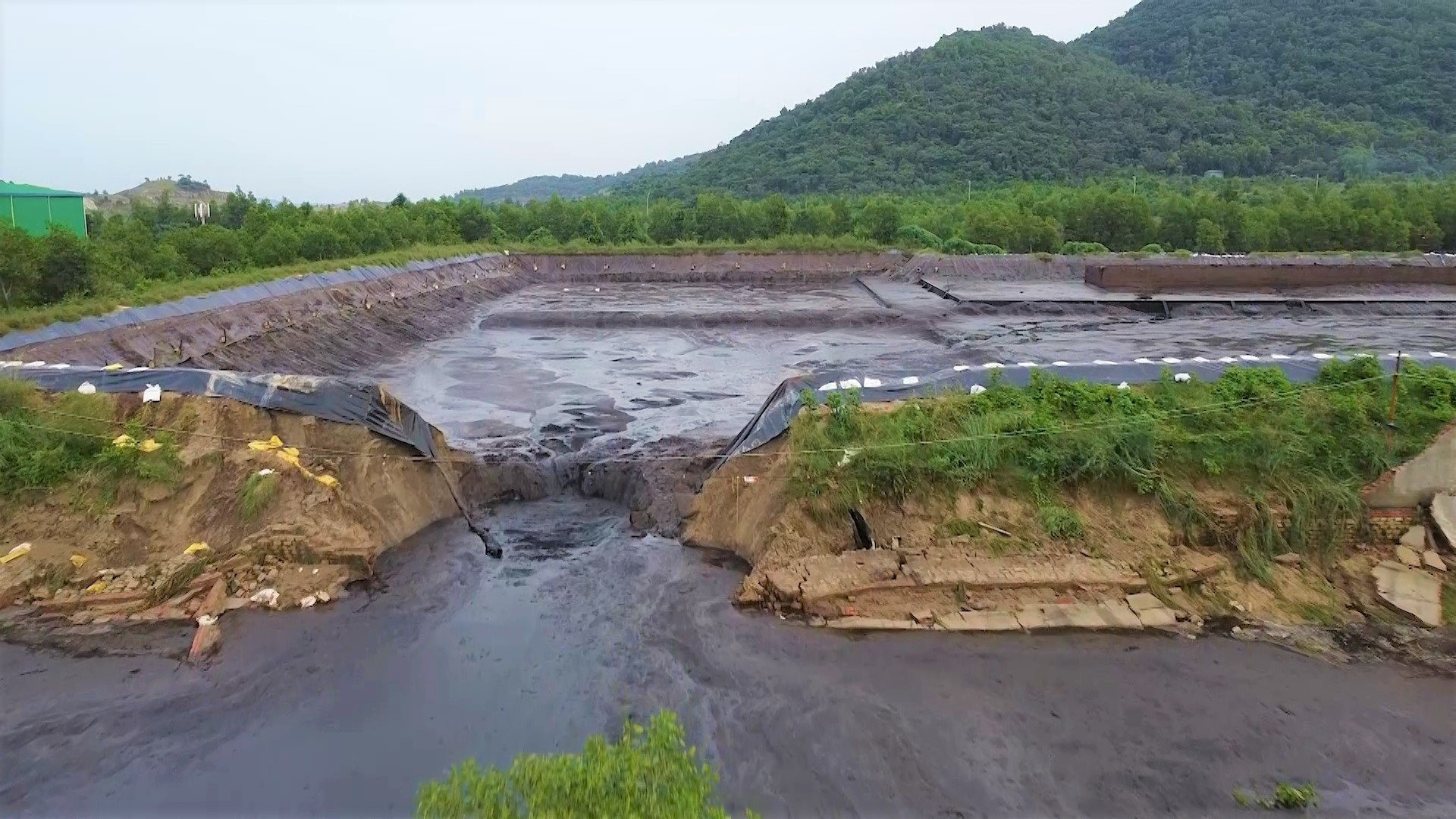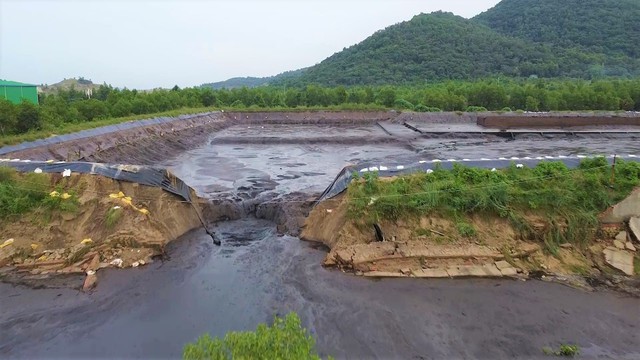Measures to prevent and overcome the consequences of waste incidents in Vietnam
What are the regulations on the measures to prevent and overcome the consequences of waste incidents in Vietnam? - Thu Trang (HCMC, Vietnam)

Measures to prevent and overcome the consequences of waste incidents in Vietnam (Internet image)
The Prime Minister of Vietnam issued Decision 146/QD-TTg dated February 23, 2023 on the national plan to respond to waste incidents for the period of 2023-2030.
Thus, the measures to prevent and overcome the consequences of waste incidents are as follows:
1. Measures to prevent waste incidents in Vietnam
Subsection 1, Section III of Decision 146/QD-TTg prescribes preventive measures as follows:
- Consolidate the directing and commanding organization together with the full-time and part-time forces, performing the tasks of management, prevention, response, and remedying waste incidents.
- Review, inspect, inspect, and strictly handle industrial parks, export processing plants, factories, craft villages, etc. that violate regulations on waste management and treatment.
Improve the capacity of monitoring, warning, notification, and alarming of incidents from the central to the local level.
- Strengthen cooperation in training high-quality human resources, scientific research, and technology transfer;
Exchange information, learn from experience in forecasting, warning, responding, and overcoming waste incidents.
- Invest in the procurement of equipment, supplies, and materials to improve the prevention and response capacity of forces from the central to the local levels.
- Direct the development of a waste incident response plan that is close to reality with the region, region, and locality. Organize training and professional skills training for full-time and part-time forces, organize drills and sports festivals;
Promote information and communication to raise awareness and responsibility for all levels, sectors, and communities in preventing, responding to, and overcoming the consequences of waste incidents and disasters.
- Improve the efficiency of coordination and synergies between ministries, branches, and localities in leading, directing, inspecting, supervising, and guiding the organization to perform the work of preventing, responding to, and overcoming waste incidents and disasters.
2. Measures to respond to and remedy the consequences of waste incidents in Vietnam
Subsection 2, Section III of Decision 146/QD-TTg stipulates measures to respond to and overcome the consequences of waste incidents as follows:
- Receiving information, evaluating the incident situation.
+ Organizing the observation, supervision, receipt of information, and timely warnings, announcements, and alarms of waste incidents on the mass media for all levels, sectors, and communities.
+ Strengthening the response mode, proactively grasping the situation, assessing it, drawing conclusions, and determining timely and effective response plans.
+ Preliminary assessment of the scope, objects, and level of impact on the environment of land, water, air, people, and living things.
- Setting up a response command.
+ Basic headquarters
Location: No. 8, Golf Course Street, Phuc Dong Ward, Long Bien District, Hanoi City.
Members include: Leaders of the National Committee for Incident and Disaster Response and Search and Rescue; Leaders of the Ministries: National Defense; Police; Natural Resources and Environment; Industry and Trade; Transportation; Diplomatic; medical; Science and technology.
Tasks: Command and direct the forces involved in responding to and overcoming waste incidents in a timely and effective manner.
+ Headquarters at the scene
Location: The place where the incident occurred.
Ingredient:
Commanding Committee for Natural Disaster Prevention and Control and Search and Rescue; representatives of departments, agencies and sectors directly commanded and directed by leaders of provincial-level People's Committees to respond and overcome consequences (In case of necessity, there is the participation and direct direction of leaders of the National Committee for Incident and Disaster Response and Search and Rescue; Leaders of relevant ministries and branches).
Mission:
Assessing and concluding the situation; determining plans to respond and overcome consequences; reporting the results to the basic headquarters to update the situation and give timely direction.
- Countermeasures
+ Organizing the evacuation of assets, vehicles, and people: The Provincial Commanding Committee for Natural Disaster Prevention and Control and Search and Rescue directs the province's on-site forces (Provincial Military Command, Provincial Public Security, provincial authorities, etc.) to coordinate with local authorities and people where the incident occurs, quickly evacuate people, vehicles, and properties from the incident area, blockade the scene, and promptly inform and guide public opinion.
+ Preventing waste sources from entering the environment, specifically:
Common solid waste incidents (domestic solid waste, industrial solid waste...): Using local forces and means to limit and prevent waste from being released into the environment, promptly deploy embankments, dig trenches, construct storage tanks, .. not allowing soil and rock waste to be released into the environment.
Liquid waste incidents (sludge, sewage): Stop waste dispersion, promptly deploy to cover the broken dam body with local materials (earthbags, sandbags, or materials available at the site) , using a pumping system to suck all wastewater collected into tanks, reservoirs...
Gas waste incident (exhaust gas): Using technology, such as: absorbing by appropriate corresponding absorbent materials such as lye, water; absorbing with absorbing materials such as activated carbon and geolite; treating exhaust gas by UV technology to treat toxic gases (Hydrogen sulfide, Mercaptans, Sulfide, Ammonia) or treating exhaust gas by Plasma technology to reduce dust concentration in the air, remove harmful gases.. .
+ Assessing the pollution level and implementing measures to remedy pollution, restore the environment, and compensate for damage (if any); Purify water with redox agents, such as:
Chlorine, Potassium Permanganate, Calcium Chlorate, Potassium Bichromate, Chlorine Dioxide, Calcium Hypochlorite... or using microorganisms to treat wastewater (biological methods), or using microorganisms to reduce toxic organic substances.
- Remediating consequences and restoring the environment after incidents and disasters
+ Organizing forces and means to collect, store, transport, and treat waste in accordance with regulations.
+ Restoration of the environment after the incident: Monitoring and assessing the quality of the environment, synthesizing reports, and bringing people back.
3. Forces and means to deal with the consequences of waste incidents in Vietnam
Subsection 3, Section III of Decision 146/QD-TTg stipulates forces and means to respond to consequences of waste incidents as follows:
- Ministry of National Defense: Center for response to incidents of toxic chemicals and nuclear radiation in the North, Central, and South regions; Oil spill response center in the North and Central regions; Centers for training dogs for search and rescue; military zones, corps, army services, academies, schools.
- Ministry of Public Security: Units: Fire prevention and fighting and rescue; Traffic police; Mobile police; Police to prevent and combat environmental crimes; the Department of Health; the Investigation Police Agency at all levels; the Center for training and use of working dogs.
- Ministry of Industry and Trade: Department of Safety Techniques and Industrial Environment; Center for Health, Labor Environment, Industry and Trade; Data Center and Chemical Incident Response Support.
- Ministry of Transport: Vietnam Maritime Search and Rescue Coordination Center; Vietnam Aviation Search and Rescue Coordination Center.
- Ministry of Health: System of hospitals, medical examination and treatment facilities; Preventive health centers; Mobile Medical Teams and 115 Emergency Center.
- Provincial People's Committee: Department of Natural Resources and Environment, Department of Industry and Trade, Department of Health; system of hospitals in the province; Urban and Environment Company.
4. Decentralization of response to consequences of waste incidents in Vietnam
Subsection 4, Section III of Decision 146/QD-TTg stipulates the following responses to waste incidents:
- Responding to waste incidents at the national level: by the National Committee for Incident and Disaster Response and Search and Rescue to advise and assist the Prime Minister and directly direct and administer the response and remediation of consequences. .
- Responding to waste incidents at the provincial level: Directly commanded and directed by the provincial People's Committees to respond to and overcome consequences.
- Responding to waste incidents at district and grassroots levels: Directly commanded by district-level People's Committees and establishment owners, directing forces to respond and overcome consequences.
5. Issue of plan to respond to waste incidents in Vietnam
Subsection 4, Section III of Decision 146/QD-TTg stipulates the promulgation of plans to respond to consequences of waste incidents as follows:
- The National Committee for Incident and Disaster Response and Search and Rescue shall develop a national plan to respond to waste incidents.
- Provincial-level People's Committees promulgate provincial-level waste incident response plans; District-level People's Committees shall issue district-level waste incident response plans.
- Owners of investment projects and facilities are responsible for promulgating and organizing the implementation of waste incident response plans suitable to the content of prevention and response to environmental incidents in the decision approving the appraisal results of the environmental impact assessment report or the environmental permit.
- National, provincial, and district plans to respond to waste incidents are developed and promulgated on a 5-year cycle and are updated, adjusted, and supplemented annually when there is a change in conditions leading to a change in content, increasing the scale, or exceeding the response capacity compared to the plan in the plan.
Decision 146/QD-TTg takes effect from February 23, 2023
- Key word:
- waste incidents in Vietnam
- Number of deputy directors of departments in Vietnam in accordance with Decree 45/2025/ND-CP
- Cases ineligible for pardon in Vietnam in 2025
- Decree 50/2025 amending Decree 151/2017 on the management of public assets in Vietnam
- Circular 07/2025 amending Circular 02/2022 on the Law on Environmental Protection in Vietnam
- Adjustment to the organizational structure of the Ministry of Health of Vietnam: Certain agencies are no longer listed in the organizational structure
- Vietnam aims to welcome 22-23 million international tourists in Vietnam in 2025
-

- Vietnam: Measures to prevent waste incidents in ...
- 18:10, 24/02/2023
-

- Notable new policies of Vietnam effective as of ...
- 16:26, 11/04/2025
-
.Medium.png)
- Notable documents of Vietnam in the previous week ...
- 16:21, 11/04/2025
-
.Medium.png)
- Notable documents of Vietnam in the previous week ...
- 16:11, 02/04/2025
-
.Medium.png)
- Notable new policies of Vietnam to be effective ...
- 16:04, 02/04/2025
-
.Medium.png)
- Notable new policies of Vietnam effective from ...
- 14:51, 21/03/2025
.jpg)
 Article table of contents
Article table of contents
